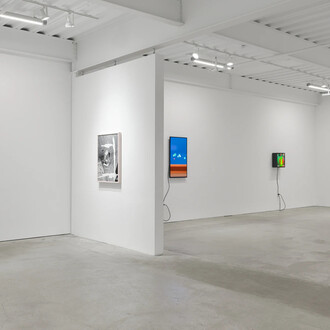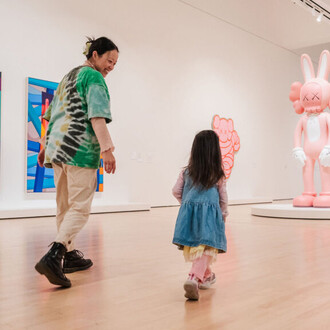The Fine Arts Museums of San Francisco (the “Fine Arts Museums”) will host, and serve as the sole West Coast venue for, the spectacular international loan exhibition Art and war in the Renaissance: the battle of Pavia tapestries. The exhibition will feature monumental tapestries and superb examples of arms and armor on loan from the Capodimonte Museum in Naples, Italy. The dazzling centerpiece of Art and War in the Renaissance will be the newly conserved, complete seven-part cycle of the Battle of Pavia tapestries. These colossal woven artworks will immerse visitors in the world of Renaissance politics, history, and art. At the de Young museum, they will be on view with their original preparatory drawings lent by the Louvre Museum plus a selection of 16th and 17th-century arms and armor from the Farnese Armory at the Capodimonte Museum. Combined, these artworks will give visitors insight into the artistry and skilled craftsmanship required to transform Renaissance tapestries from initial designs into glittering propagandistic luxuries.
The Battle of Pavia tapestries celebrate the decisive victory of Holy Roman Emperor Charles V and the imperial army over the French army led by King Francis I. This pivotal battle ended the Italian war, which had begun in 1521, and stopped the French from encroaching into Italian territories. This decisive moment in European history took place almost exactly 500 years ago on February 24, 1525, around the town of Pavia, outside of Milan.
"Monumental in scale, tapestries were the grandest form of art and propaganda in the Renaissance and kings and popes spent vast sums to commission them. Yet few of these great sets have survived and even fewer are on display. So, the fact that the Battle of Pavia tapestries have survived complete and in good condition, is little short of extraordinary”, said Thomas P. Campbell, director and CEO of the Fine Arts Museums, and one of the world’s leading authorities on European tapestries. “The tapestries depict a pivotal battle that took place in February 1525, at which the army of the Emperor Charles V roundly defeated the French army and captured the French king, Francis I, thereby changing the course of Italian history. The deciding factor in the battle were the handguns of the imperial troops, against which the armor of the French knights was no protection. Quite apart from the historical significance of the event, the tapestries are remarkable for the scale, realism and detail with which they depicted the events of this epochal battle. The tapestries have been newly cleaned and restored and the chance to see them in San Francisco, five hundred years after the events depicted, is not to be missed".
During the Renaissance, tapestries were the art form of kings, prized by rulers as lavish displays of wealth and power, woven on a grand scale by vast workshops, using precious materials, and costing exponentially more than paintings. The grand Battle of Pavia tapestries were made with silver- and gold-wrapped thread, as well as expensive wools and silks from across the globe.
The manufacture of tapestries was a huge collaborative endeavor and necessitated years of work to produce one set. A single panel of the Battle of Pavia tapestries set would have taken roughly 18 months to produce.
"The scale of these tapestries is staggering, as is the sheer profusion of detail. You can find something new and exciting every time you look”, said Jeffrey Fraiman, Assistant Curator of European Decorative Arts and Sculpture, and organizing curator of the exhibition. “But it is also the freshness—the immediacy—of them that hits you. These are half a millennium old, and their survival, in this condition, feels miraculous. I think our audiences will be awestruck".
The tapestries were woven after designs by Bernard van Orley (ca. 1488–1541), an artist renowned for his portraits and religious paintings, as well as his stained glass and tapestry designs. Van Orley was a quintessentially cosmopolitan artist, who combined Northern and Southern European influences and revolutionized tapestry design in Flanders.
Van Orley was a leading figure in Renaissance Brussels and a court artist to Margaret of Austria. He embraced the latest artistic advances out of Rome and was particularly known for making a careful study of Raphael’s designs for tapestries to decorate the Sistine Chapel. Van Orley learned his trade from the German master Albrecht Dürer, whose meticulous attention to detail—and specific figure types—find an echo in Van Orley’s battle work.
Artists such as Van Orley would develop the designs for the scenes through sketches and more finished compositional drawings before making finished models (modelli) to present to patrons; these were translated into full-scale paintings known as cartoons, which were then used by the weavers, who had to translate the cartoons into woven scenes using colored threads. This process of artist production will be evident in the exhibition through the display of the presentation drawings lent by the Louvre, the inclusion of which will be exclusive to the San Francisco stop of the exhibition tour.















